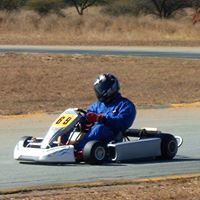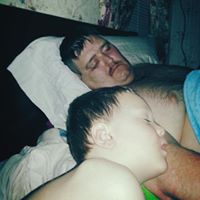Kenneth F Cowan
age ~63
from Everett, WA
- Also known as:
-
- Ken F Cowan
- Katherine E Cowan
- Katie E Cowan
Kenneth Cowan Phones & Addresses
- Everett, WA
- 7025 NE 132Nd St, Kirkland, WA 98034 • (253)8311244
- Kingsgate, WA
- Shoreline, WA
Specialities
Bankruptcy • Civil Litigation • Business & Contract Matters • Commercial/Financial Law • Family Law • Injury Cases • Real Estate • Construction Law • Transportation Law • Wills • Estates • Probate Law
Lawyers & Attorneys

Kenneth Cowan - Lawyer
view sourceSpecialties:
Bankruptcy
Civil Litigation
Business & Contract Matters
Commercial/Financial Law
Family Law
Injury Cases
Real Estate
Construction Law
Transportation Law
Wills
Estates
Probate Law
Civil Litigation
Business & Contract Matters
Commercial/Financial Law
Family Law
Injury Cases
Real Estate
Construction Law
Transportation Law
Wills
Estates
Probate Law
ISLN:
908154720
Admitted:
1983
University:
University of Arkansas, B.A., 1980
Law School:
University of Arkansas, J.D., 1983
Us Patents
-
Frequency-Agile System For Telemetry With Implantable Device
view source -
US Patent:7769456, Aug 3, 2010
-
Filed:Sep 1, 2006
-
Appl. No.:11/469804
-
Inventors:Joseph E. Bange - Eagan MN, US
Vineel Vallapureddy - Coon Rapids MN, US
Kenneth F. Cowan - Kirkland WA, US -
Assignee:Cardiac Pacemakers, Inc. - St. Paul MN
-
International Classification:A61N 1/372
A61N 1/37 -
US Classification:607 30, 607 31, 607 32, 607 60, 34053912
-
Abstract:The present disclosure relates to an RF telemetry system and method for enabling communication between an implantable medical device and an external device with an improved tolerance to noise from external sources. Multiple communications channels at different frequencies are provided which are synchronously switched between during a communications session by both devices.
-
Implantable Medical Device Telemetry With Hop-On-Error Frequency Hopping
view source -
US Patent:8433420, Apr 30, 2013
-
Filed:Oct 18, 2011
-
Appl. No.:13/275417
-
Inventors:Joseph E. Bange - Eagan MN, US
Earle Roberts - Maple Grove MN, US
Kenneth F. Cowan - Kirkland WA, US
Mehdi Katoozi - Issaquah WA, US -
Assignee:Cardiac Pacemakers, Inc. - St. Paul MN
-
International Classification:A61N 1/08
-
US Classification:607 60, 34053912, 128903, 607 32
-
Abstract:A telemetry system for data transmission between an implantable medical device and an external system includes a plurality of channels each representing a frequency band within a predetermined frequency range. The data transmission is performed using at least one active channel at any instant. Channel hopping is performed upon detecting an interruption of communication, such that a scan is performed through an array of channels selected from the plurality of channels. If a data frame is not successfully transmitted, it is repeatedly re-transmitted using the current and/or the next active channels until its transmission becomes successful.
-
Implantable Medical Device Telemetry With Hop-On-Error Frequency Hopping
view source -
US Patent:8046079, Oct 25, 2011
-
Filed:Mar 13, 2007
-
Appl. No.:11/685577
-
Inventors:Joseph E. Bange - Eagan MN, US
Earle Roberts - Maple Grove MN, US
Kenneth F. Cowan - Kirkland WA, US
Mehdi Katoozi - Issaquah WA, US -
Assignee:Cardiac Pacemakers, Inc. - St. Paul MN
-
International Classification:A61N 1/08
-
US Classification:607 60, 34053912, 128903, 607 32
-
Abstract:A telemetry system for data transmission between an implantable medical device and an external system includes a plurality of channels each representing a frequency band within a predetermined frequency range. The data transmission is performed using at least one active channel at any instant. Channel hopping is performed upon detecting an interruption of communication, such that a scan is performed through an array of channels selected from the plurality of channels. If a data frame is not successfully transmitted, it is repeatedly re-transmitted using the current and/or the next active channels until its transmission becomes successful.
-
Rfid-Based Sensing Of Changed Condition
view source -
US Patent:20140049377, Feb 20, 2014
-
Filed:Oct 28, 2013
-
Appl. No.:14/064515
-
Inventors:Isabelle Banville - Newcastle WA, US
Joseph Leo Sullivan - Kirkland WA, US
David Peter Finch - Bothell WA, US
Daniel Ralph Piha - Bellevue WA, US
Laura Marie Gustavson - Redmond WA, US
Kenneth Frederick Cowan - Kirkland WA, US
Richard C. Nova - Seattle WA, US
Carmen Ann Chacon - Vashon WA, US
Gregory T. Kavounas - Bellevue WA, US -
Assignee:Physio-Control, Inc. - Redmond WA
-
International Classification:G06K 7/10
-
US Classification:340 101
-
Abstract:RFID-based sensors, RFID readers and software sense a changed condition. In one embodiment, an RFID-based sensor includes a base that may be placed at a location where a condition may change. The sensor includes an RFID tag that is coupled to the base. The sensor also includes a detector that can be electrically coupled to the RFID tag. If the condition changes, an electrical property of the detector also changes, impacting an operation of the RFID tag. The impacted operation can be detected by an RFID reader/interrogator so as to provide a notification. An advantage over the prior art is that the condition change can be sensed wirelessly over a domain that can be laborious or hazardous to access otherwise. Moreover, RFID based sensors can be made by modifying common RFID tags.
-
Detecting Loss Of Full Skin Contact In Patient Electrodes
view source -
US Patent:20140051962, Feb 20, 2014
-
Filed:Oct 28, 2013
-
Appl. No.:14/064468
-
Inventors:Isabelle Banville - Newcastle WA, US
Joseph Leo Sullivan - Kirkland WA, US
David Peter Finch - Bothell WA, US
Daniel Ralph Piha - Bellevue WA, US
Laura Marie Gustavson - Redmond WA, US
Kenneth Frederick Cowan - Kirkland WA, US
Richard C. Nova - Seattle WA, US
Carmen Ann Chacon - Vashon WA, US
Gregory T. Kavounas - Bellevue WA, US -
Assignee:Physio-Control, Inc. - Redmond WA
-
International Classification:A61B 5/0424
A61N 1/04
A61B 5/00 -
US Classification:600386
-
Abstract:Patient electrodes, patient monitors, defibrillators, wearable defibrillators, software and methods may warn when an electrode stops being fully attached to the patient's skin. A patient electrode includes a pad for attaching to the skin of a patient, a lead coupled to the pad, and a contact detector that can change state, when the pad does not contact fully the skin of the patient. When the detector changes state, an output device may emit an alert, for notifying a rescuer or even the patient.
-
Controlling Functions Of Wearable Cardiac Defibrillation System
view source -
US Patent:20220313989, Oct 6, 2022
-
Filed:Jun 23, 2022
-
Appl. No.:17/847680
-
Inventors:- Grand Cayman, KY
Erick Michael Roane - Kirkland WA, US
Laura Marie Gustavson - Redmond WA, US
Kenneth F. Cowan - Everett WA, US
Robert Reuben Buchanan - Bothell WA, US
Daniel James Finney - Woodinville WA, US
Jason W. Fouts - Bothell WA, US
Gregory T. Kavounas - Bellevue WA, US -
Assignee:West Affum Holdings Corp. - Grand Cayman
-
International Classification:A61N 1/08
A61N 1/39
A61B 5/00
A61B 5/332 -
Abstract:A Wearable Cardiac Defibrillator (WCD) system is configured to be worn by a patient who carries a mobile communication device. The mobile communication device has a user interface that is configured to enable the patient to enter wireless inputs. The WCD system includes a communication module that is configured to establish a local comlink with the mobile communication device. The WCD system also includes a tethered action unit that has a user interface configured to enable the patient to enter action inputs. The WCD system can perform some of its functions in response to the action inputs or to the wireless inputs. Since the wireless inputs can be provided from the mobile communication device instead of the action unit, the patient is less likely to attract attention when entering them, and thus exhibit better compliance.
-
Wearable Medical Device (Wmd) Implementing Adaptive Techniques To Save Power
view source -
US Patent:20220296909, Sep 22, 2022
-
Filed:Feb 28, 2022
-
Appl. No.:17/682245
-
Inventors:- Grand Cayman, KY
Erick M. Roane - Bellevue WA, US
Kenneth F. Cowan - Kirkland WA, US
Derek J. Valleroy - Seattle WA, US
Gregory T. Kavounas - Bellevue WA, US -
Assignee:West Affum Holdings Corp. - Grand Cayman
-
International Classification:A61N 1/39
A61B 5/024
A61N 1/04
A61B 5/30
A61B 5/282
A61B 5/364 -
Abstract:A wearable cardioverter defibrillator (WCD) comprises a plurality of electrocardiography (ECG) electrodes and a plurality of defibrillator electrodes to contact the patient's skin when the WCD is delivering therapy to the patient, a preamplifier coupled to the ECG electrodes to obtain ECG data from the patient. a processor to receive the ECG data from the preamplifier, and a high voltage subsystem to provide a defibrillation voltage to the patient through the plurality of defibrillator electrodes in response to a shock signal received from the processor. In a first power mode of a range of power modes the preamplifier is configured to perform low-fidelity ECG acquisition and the processor is configured to perform simple arrythmia detection analysis, and in a second mode of the range of power modes the preamplifier is configured to perform high-fidelity ECG acquisition and the processor is configured to perform complex arrythmia detection analysis.
-
Power In A Wearable Cardioverter Defibrillator (Wcd)
view source -
US Patent:20230089192, Mar 23, 2023
-
Filed:Apr 29, 2022
-
Appl. No.:17/732805
-
Inventors:- Grand Cayman, KY
Kenneth F. Cowan - Everett WA, US
David P. Finch - Bothell WA, US
Joseph L. Sullivan - Kirkland WA, US -
Assignee:West Affum Holdings Corp. - Grand Cayman
-
International Classification:A61N 1/39
H02J 7/34 -
Abstract:A wearable medical device comprising monitoring circuitry to monitor one or more patient parameters of a patient and defibrillation circuitry to provide one or more defibrillation shocks to the patient responsive to a control signal from the monitoring circuitry. The defibrillation circuitry comprises a defibrillation capacitor to provide energy for the one or more defibrillation shocks. The wearable medical device also comprises a power source to provide power to the monitoring circuitry and the defibrillation circuitry. The power source comprises a low current power source (LCPS) to provide power to the monitoring circuitry, and a high current power source (HCPS) to provide power to the defibrillation circuitry.
Name / Title
Company / Classification
Phones & Addresses
WIRENET, INC
SHOREMEN PROPERTIES, LLC
OLYMPUS COMMUNICATIONS, INC
K.D. COWAN, INC
AMERICAN PAYROLL SOLUTIONS, INC
Isbn (Books And Publications)

Medicine Doctors

Kenneth H. Cowan
view sourceSpecialties:
Hematology/Oncology, Internal Medicine
Work:
UNMC Physicians Group
986805 Nebraska Medical Ctr, Omaha, NE 68198
(402)5594238 (phone), (402)5594652 (fax)
UNMC PhysiciansNebraska Medicine Peggy D Cowdery Patient Care Center
4400 Emile St, Omaha, NE 68198
(402)5595600 (phone), (402)5594835 (fax)
986805 Nebraska Medical Ctr, Omaha, NE 68198
(402)5594238 (phone), (402)5594652 (fax)
UNMC PhysiciansNebraska Medicine Peggy D Cowdery Patient Care Center
4400 Emile St, Omaha, NE 68198
(402)5595600 (phone), (402)5594835 (fax)
Education:
Medical School
Case Western Reserve University School of Medicine
Graduated: 1975
Case Western Reserve University School of Medicine
Graduated: 1975
Procedures:
Chemotherapy
Conditions:
Malignant Neoplasm of Female Breast
Anemia
Breast Neoplasm, Malignant
Iron Deficiency Anemia
Kidney Cancer
Anemia
Breast Neoplasm, Malignant
Iron Deficiency Anemia
Kidney Cancer
Languages:
English
Description:
Dr. Cowan graduated from the Case Western Reserve University School of Medicine in 1975. He works in Omaha, NE and 1 other location and specializes in Hematology/Oncology and Internal Medicine. Dr. Cowan is affiliated with Nebraska Medical Center.
Resumes

Calibration Technician
view sourceLocation:
Everett, WA
Industry:
Electrical/Electronic Manufacturing
Work:
Richard J Bagan May 2007 - Jul 2012
Calibration Technician
Fluke Corporation May 2007 - Jul 2012
Calibration Technician
Calibration Technician
Fluke Corporation May 2007 - Jul 2012
Calibration Technician
Education:
Itt Technical Institute - Fort Wayne 2005 - 2008
Bachelors, Bachelor of Science, Electronics, Engineering, Communications Chatrapati Sahuji Maharaj Kanpur University, Kanpur 2005 - 2007
Associates, Associate of Arts, Electronics Engineering Southwestern Michigan College 2003 - 2005
Associates, Associate of Arts, Electronics
Bachelors, Bachelor of Science, Electronics, Engineering, Communications Chatrapati Sahuji Maharaj Kanpur University, Kanpur 2005 - 2007
Associates, Associate of Arts, Electronics Engineering Southwestern Michigan College 2003 - 2005
Associates, Associate of Arts, Electronics
Skills:
Calibration
Electronics
Troubleshooting
Test Equipment
Continuous Improvement
Testing
Lean Manufacturing
Root Cause Analysis
Soldering
Electricians
Automation
Multimeter
Software Documentation
Quality Assurance
Spc
Plc
Pressure
Electronics
Troubleshooting
Test Equipment
Continuous Improvement
Testing
Lean Manufacturing
Root Cause Analysis
Soldering
Electricians
Automation
Multimeter
Software Documentation
Quality Assurance
Spc
Plc
Pressure

Kenneth Cowan
view source
Kenneth Cowan
view source
Kenneth Cowan
view source
Kenneth Cowan
view source
Kenneth Cowan
view source
Kenneth Cowan
view source
Kenneth Cowan
view sourceGoogleplus

Kenneth Cowan
Lived:
Everett, WA
Columbia City, IN
Niles, MI
Fort Wayne, IN
New Ulm, MN
Columbia City, IN
Niles, MI
Fort Wayne, IN
New Ulm, MN
Tagline:
If at first you don't suceed.... skydiving is not for you.

Kenneth Cowan
Work:
Sea Crest Home Health & Hospice - Operations Manager (2010)

Kenneth Cowan

Kenneth Cowan

Kenneth Cowan

Kenneth Cowan

Kenneth Cowan

Kenneth Cowan
Myspace

Kenneth Cowan
view source
Kenneth Cowan
view source
Kenneth Cowan
view source
Kenneth F. Cowan
view source
Kenneth Cowan
view source
Kenneth Cowan
view source
Kenneth Cowan
view source
Kenneth Cowan
view sourceClassmates

Kenneth Cowan
view sourceSchools:
Elwood Secondary High School Melbourne Australia 1963-1967

Kenneth Cowan
view sourceSchools:
Tunstall Middle School Dry Fork VA 1961-1965
Community:
Jean Bradner, Payton Osborne, Jasmine Correll, Danielle Stroud, Robert Tucker

Kenneth Cowan
view sourceSchools:
Council Training High School Huntsville AL 1966-1970
Community:
Geraldine Jack, Jake Pope

Kenneth Cowan
view sourceSchools:
Dadeville High School Dadeville MO 1973-1985
Community:
Jim Hudson, Blaine Means, David Medley, Anita Vance, John Sherwood, Roger Cole, Sherry Cowan, Rita Hall, Steve Hensley, Connie Killingsworth

Kenneth Cowan
view sourceSchools:
Jersey City Public School 11 Jersey City NJ 1935-1939
Community:
Irene Kolster, Geraldine Rubano, Audrey Schalk, Constance Truise, Joseph Meaney, Luz Villasana, Joe Fahey, Shakeria Moreland, Elaine Kraut, Maria Bautista

Kenneth Cowan
view sourceSchools:
North High School Olathe KS 1993-1997
Community:
Brent Upton, Dora Turner, Sharon Owens, Jaime Parker, Kevin Linden, Mindi Bruce, James Donald, Jessica Perry, Rachel Senay

Kenneth Cowan
view sourceSchools:
Adairville High School Adairville KY 1966-1970
Community:
Hal Mathews, Nathaniel Spaulding, Terry Mason, Theresa Smith, Lynn Bertram, Dianna Wix, Vicki Costello, Bonnie Lawrence, Donna Russell, Carol Ross

Kenneth Cowan, Griffin Hi...
view sourceYoutube
Plaxo

Kenneth Cowan
view sourceGet Report for Kenneth F Cowan from Everett, WA, age ~63










